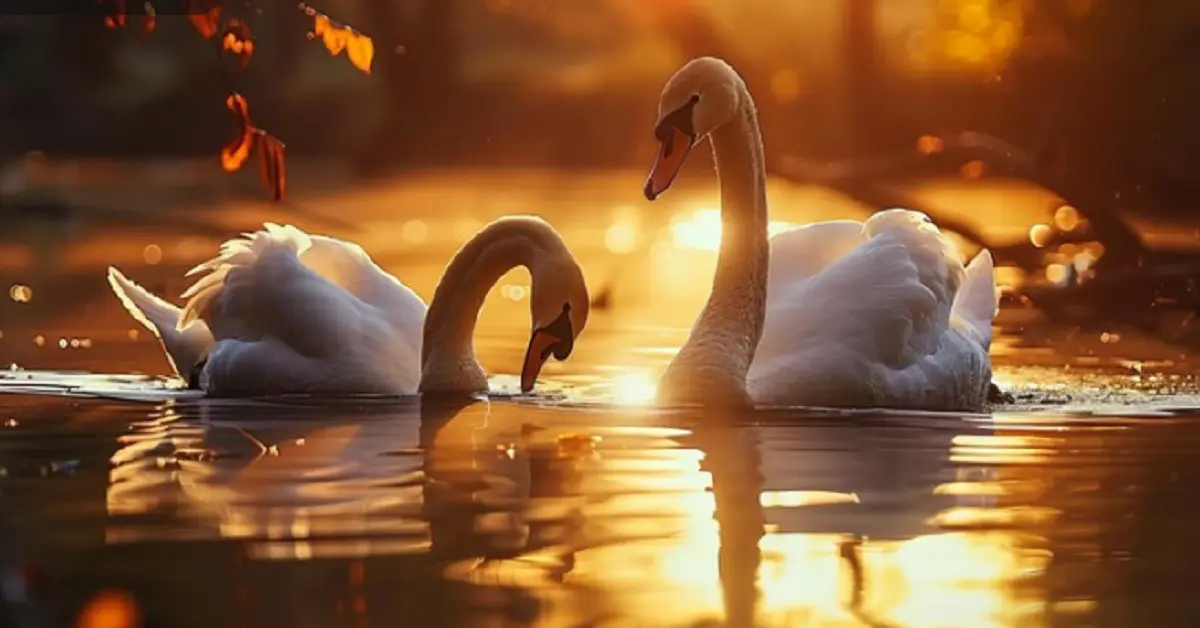Understanding Cobs and Cygnets: The Life of Swans

Introduction to Cobs and Cygnets
When you think of swans, you probably envision a majestic bird gliding gracefully across a serene lake. But have you ever wondered about the different stages of a swan’s life or the roles within their families? Let’s dive into the world of swans, focusing on two key aspects: the cobs and cygnets nyt and the cygnet.
Defining Cobs
In the world of swans, a cob is the term used to describe a male swan. Cobs and cygnets nyt are known for their protective nature, often taking on the role of the guardian in the swan family. They are larger and more aggressive than their female counterparts, known as pens. The cob’s primary role is to defend the territory and ensure the safety of the nest and the young ones.
Understanding Cygnets
A cygnet is a young swan, usually characterized by its greyish downy feathers. Unlike the elegant white appearance of adult swans, cygnets are often underestimated due to their less striking appearance. However, these little ones are vital to the continuation of the species and will eventually grow into the graceful birds we associate with swans.
The Relationship Between Cobs and Cygnets
The Role of Cobs in Swan Families
Cobs play a crucial role in the upbringing of cygnets. They are not just passive figures; they actively participate in the care and protection of the young. From leading them to safe feeding grounds to teaching them how to fend for themselves, cobs are essential to the survival of their offspring.
Growth Stages of Cygnets
Cygnets undergo several growth stages before they reach maturity. From the moment they hatch, they are under the watchful eyes of both parents, particularly the cob. Over time, they shed their grey down and develop the characteristic white plumage of adult swans. This transformation is a critical period where the cygnets learn essential survival skills.
Swans in the Natural World
Habitat and Distribution
Swans are found in various parts of the world, with their habitats ranging from temperate regions to the colder parts of the Northern Hemisphere. They are often seen in lakes, rivers, and wetlands, where they find ample food and nesting sites. The presence of swans in these ecosystems is an indicator of the health of the environment.
Behavior and Social Structure
Swans are known for their complex social structures. They are monogamous birds, meaning they typically mate for life. The bond between a cobs and cygnets nyt and a pen is strong, and together they raise their cygnets with care. Swans are also territorial and will aggressively defend their nesting sites from intruders.
Cobs and Cygnets in Literature and Culture
Symbolism of Swans
Swans have long been symbols of beauty, grace, and purity in various cultures. They often appear in myths, legends, and fairy tales, representing everything from love and transformation to death and the afterlife. The image of a swan, particularly in relation to cobs and cygnets, is powerful and evocative.
Famous References in Literature
Swans have been featured in many literary works. From Hans Christian Andersen’s “The Ugly Duckling” to Yeats’ “The Wild Swans at Coole,” these birds have inspired countless writers. The transformation of cygnets into majestic swans is often used as a metaphor for personal growth and change.
The New York Times and Its Coverage
Overview of NYT’s Wildlife Reporting
The New York Times has a long history of reporting on wildlife and conservation issues. Their in-depth articles and features provide readers with insights into the natural world and the challenges it faces. The NYT’s coverage helps raise awareness about the importance of protecting wildlife, including swans.
Specific Features on Cobs and Cygnets
Over the years, the New York Times has published several pieces focused on swans, particularly cobs and cygnets. These articles often highlight the challenges swans face in the wild, from habitat loss to climate change. The paper’s coverage plays a crucial role in educating the public about these issues.
Conservation Efforts for Swans
Challenges in Swan Conservation
Swan populations face numerous challenges, including habitat destruction, pollution, and climate change. These factors threaten the survival of both cobs and cygnets. Conservation efforts are vital to ensuring that these majestic birds continue to thrive in the wild.
Initiatives to Protect Cobs and Cygnets
Various organizations are working to protect swans and their habitats. These initiatives range from habitat restoration projects to public education campaigns aimed at reducing pollution and human disturbance. Supporting these efforts is crucial for the long-term survival of swans.
The Importance of Public Awareness
Role of Media in Wildlife Conservation
The media plays a vital role in raising awareness about wildlife conservation. By highlighting the plight of species like swans, outlets like the New York Times help garner public support for conservation efforts. This awareness is key to driving change and protecting endangered species.
How You Can Help Protect Swans
You can make a difference by supporting conservation efforts, whether through donations, volunteering, or simply spreading the word. Educating yourself and others about the challenges swans face is the first step towards making a positive impact.
Conclusion
Recap of Key Points
Swans, particularly cobs and cygnets nyt and cygnets, are fascinating creatures with complex social structures and significant cultural symbolism. Understanding their roles within swan families, as well as the challenges they face, is crucial for their conservation.
The Future of Cobs and Cygnets
The future of cobs and cygnets nyt depends on continued conservation efforts and public awareness. By taking action now, we can help ensure that these beautiful birds continue to grace our lakes and rivers for generations to come.